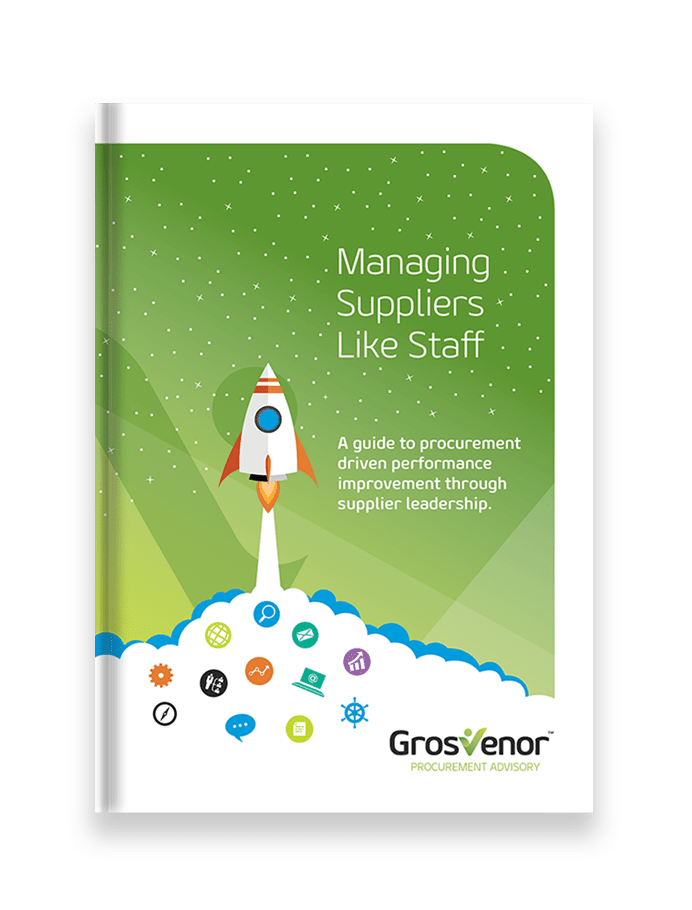Best practice KPI development and reporting for stellar supplier outcomes

How to develop and measure KPIs and create a KPI report
You may have heard the saying, ‘what gets measured gets done’. Use of Key Performance Indicators (KPIs) is the main way supplier performance is measured and the main mechanism for driving supplier behaviour. Here’s some tips on how to develop and measure best practice KPIs to encourage ongoing performance and exceptional outcomes from your suppliers.
Performance Management Framework
If you want to write best practice KPIs, first you need to understand their function in a performance management framework (PMF).
A PMF is a top-down structure that cascades from the strategic objective down, through CSFs and KPIs down to performance standards:
- Strategic objective: Why do we have this contract? For example: Providing a clean and safe office environment to our staff.
- Critical success factors: How do we know that the objective has been achieved? For example: Customer satisfaction with cleaning company is above 90%.
- Key performance indicators: What behaviours do we want to drive to achieve the critical success factors? For example: Less than 2 complaints about unclean rooms per month.
- Performance standards: What must the supplier do? For example: Carpets must be vacuumed twice a week.
As your main tool to measure supplier performance and drive supplier behaviour, KPIs align service delivery with your contract strategy and Critical Success Factors (CSFs). So it’s important that your current state, future objectives and CSFs are well defined, before you start developing your KPIs.
It’s a collaborative process
KPIs are agreed between the two parties to the contract. Therefore, developing great KPIs is a collaborative process. It’s important that you create KPIs that drive service delivery behaviours to meet end-user and stakeholder needs as well as the key operational outcomes for the business.
When developing KPIs, consider each of your CSFs and identify a range of indicators for achieving each one. Then reduce your list down to the smallest number of indicators that will allow you to assess if the contract objectives have been reached. You should make sure that any KPIs that make the final cut are SMART.
It is essential that both parties buy in to the KPIs. Not having agreement can be as damaging as poorly designed KPIs. If the contract is to be delivered in a dynamic environment, you should be prepared to continue the discussions over the life of the contract.
What gets measured gets done
It’s important to actively monitor your supplier’s performance against your KPIs. Setting up effective KPI reporting will provide you with the information you need to manage this process, and ensure that you get the service you’re paying for.
Regular reporting is essential
What you report on and how often you report will depend on the SMART criteria for your KPIs, your communication plans and the reporting frameworks agreed with your supplier. It’s essential that reporting is done at regular intervals so that you have trending information and can have meaningful, fact-based performance discussions.
Generally KPI reporting is presented in a dashboard format to make it easy to see how performance is tracking against the agreed KPIs. You should aim to keep the report short, one or two pages, and if possible presented using graphs and charts so that information can be easily understood at a glance. Once you’ve developed your report, don’t keep changing it – it makes it difficult to track and understand.
Your report is only as good as its data
Usually creating the report is the easy part of the process; the challenging part is finding relevant information to plug in.
Reporting can easily go off the rails if people use the wrong data to support their KPI. How for example do you measure the success of an internal communication campaign that asks people to check and update their contact information in an HR system? Often measures such as hit rates for an intranet article or the percentage of people who opened an email are used to demonstrate the success of a campaign. However, reading the article or email that tells people to update their details doesn’t support the actual objective. A better measure would be how many people log into the HR system and review/update their details before the deadline.
Locating a reliable data source is an essential step. Your report will only be as good as the data it is based on, so before you decide to use a source it’s important to ask if it’s:
- Collectable: Can you can collect the information easily, consistently and cost effectively?
- Trustworthy: Is the data accurate? Are you sure?
- Useful: Can it be acted on?
- Timely: Is the information still relevant by the time it’s reported on?
Remember, even the best KPIs are toothless tigers if they don’t have meaningful consequences attached to their achievement.









 We are all about sharing our expertise to help you and your organisation be the best it can be.
We are all about sharing our expertise to help you and your organisation be the best it can be.